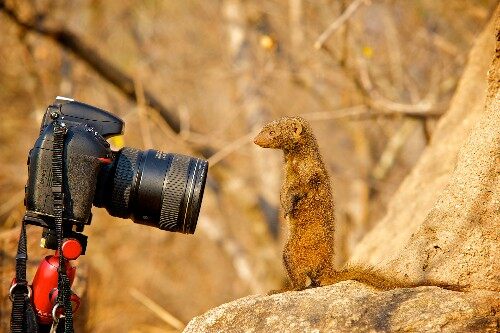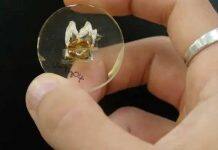A University of Bristol project set up to monitor wild groups of dwarf mongooses in South Africa has marked its ten-year milestone.


Professor Andy Radford, Dr Amy Morris-Drake, Dr Julie Kern and their team from the School of Biological Sciences have spent the past decade observing these charismatic mammals year round in their natural habitat, making fascinating discoveries that only long-term field studies can yield.
The study duration means that the academics have been able to document the full life-histories of many individuals in the dwarf mongoose population, uncovering secrets about their social interactions, ways of communicating, friendships and disputes.
Importantly, the team have made these observations without handling the animals who are habituated to their close presence, can be individually marked with blonde hair-dye using an elongated paintbrush and are even trained to weigh themselves.
Professor Radford said: “There are many reasons why this project is special. It is to us because we set it up from scratch and then have managed to keep it going for so long. It’s incredibly challenging to keep a field project going year in and year out.
“But one massive advantage if you can do that, is that you start accumulating otherwise impossible data. You can track individuals from birth to death, you know everything that went on in their lives.
“It also allows you to study rare occurrences. For example, a member of the dominant breeding pair might only be replaced once every couple of years, on average, but by monitoring the mongooses for ten years we have witnessed enough such events to answer interesting questions.”
These curious animals have complex social structures and have remarkable anthropomorphic qualities, which have been reported in numerous scientific journals.
The team have discovered that individuals monitor the actions of their groupmates through acoustic cues and store that information for later. Dwarf mongooses who have taken on the role as sentinel – or watchman – are rewarded in social grooming sessions back at the burrow that evening. At the same time, members heard to be displaying bullying behaviour will be avoided later on.
The project has also uncovered evidence that dwarf mongooses work together in the face of outside threats including those posed by rival groups and predators, and form best friends whom they preferentially help. Much of their behaviour is underpinned by a range of calls which signal different pieces of information such as warnings of danger, a need for help and the presence of a sentinel watching for trouble.
Professor Radford said: “We are able to combine the long-term life-history monitoring with field experiments. The latter are often challenging to achieve – it takes patience, perseverance and skill, which the field team have in abundance – but the rewards are great.
“The longer you spend with an animal – the more you study it – the more questions you have rather than answers. That’s how science advances.”
The team are hoping to continue the project for many more years to come, funding permitting.








































